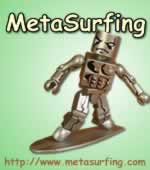The new innovation, called UltraHaptics, uses an array of ultrasonic transducers to generate a complex set of sound waves. The array is phased--like the best new-generation military radar systems--so that sound waves generated by each sensor arrive at a chosen point in space at the same time. When enough ultrasound waves are focused on a point above, say, a tablet's surface they can generate a definite sensation in a human fingertip thanks to the high sensitivity of the nervous system.
Through a series of tests and experiments, the researchers have shown that they can create individual haptic feedback points that are finer than a user can sense. This means in theory that if you combine a number of these points then you should be able to generate very complex and subtle force feedback sensations, something akin to running one's finger over a slight edge on an onscreen UI button--as if it were a real, raised surface. Since the effects are generated by an array of transducers, this also means they're not localized to the near vicinity of the transducer itself (as in existing phone buzzers) and can thus deliver feedback for very large screens.
More @ Co.Labs




